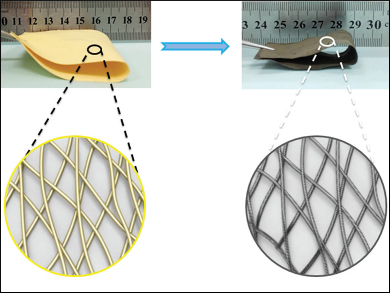Sodium ion batteries (SIBs) are of great interest as an alternative to lithium-ion batteries due to the low cost of sodium. The use of SIBs is restricted by the lack of high-performance electrodes, their insufficient rate capability, and the short cycle life. Carbon-based materials, such as graphene or amorphous carbon, are considered the most promising electrode materials, but the demands for high energy density and durability are still not met. A new strategy are free-standing electrodes, in which all of the material participates in sodium storage.
Xiong Wen Lou, Nanyang Technology University, Singapore, Haihui Wang, South China University of Technology, Guangzhou, China, and colleagues used electrospinning to fabricate free-standing flexible nitrogen-doped carbon nanofiber films (N-CNF) with polyamic acid as a polymer precursor. Electrospinning is a fiber production method which uses electric force to draw charged threads of polymer solution or melts into fibers with diameters of some ten nanometers.
The resulting N-CNFs feature a 3D network with pores of different sizes, high structural durability, and mechanical flexibility. The N-CNF has a high capacity of 315 mAh g–1 at a current density of 0.5 A g–1 and exhibits a stable capacity after 7000 cycles of charging.
- Free-Standing Nitrogen-Doped Carbon Nanofiber Films: Integrated Electrodes for Sodium-Ion Batteries with Ultralong Cycle Life and Superior Rate Capability,
Suqing Wang, Lu Xia, Le Yu, Lei Zhang, Haihui Wang, Xiong Wen (David) Lou,
Adv. Energy Mater. 2015.
DOI: 10.1002/aenm.201502217




